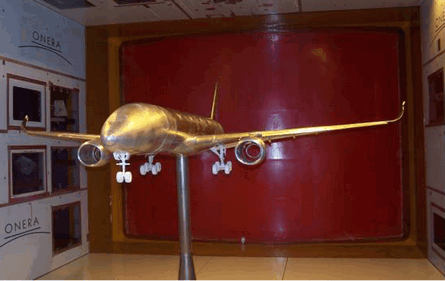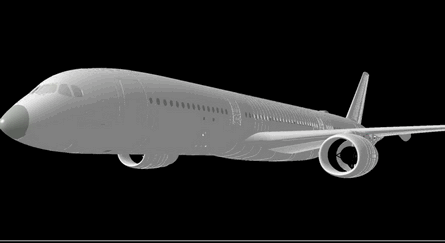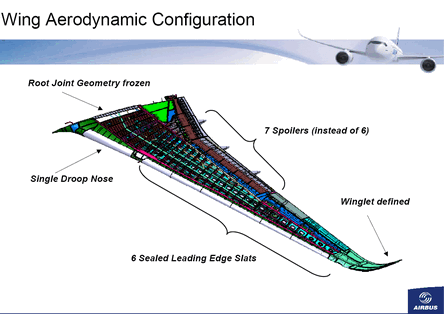Airbus has released details about the latest configuration of the A350 XWB as it closes on the twinjet's "aeroline freeze" next month and detailed definition milestone at year-end.
A large amount of the A350's aerodynamic evaluation has been done using computational fluid dynamics, but the airframer has also completed 4,000h of windtunnel testing - three-quarters of which have been low-speed trials - since September last year. "We've seen a very good agreement between the computation codes and the windtunnel testing," says A350 chief engineer Gordon McConnell.
 |
|---|
© Airbus |
Airbus has released computer-aided design model images of the A350 that show its latest thinking on the fuselage and nose shape. The XWB's wing design has been refined and now incorporates a streamwise flap motion design to reduce drag and seven-spoiler configuration instead of the six previously planned.
 |
|---|
© Airbus |
The shape of the winglet has also been defined. This has "some rake and some blending", says McConnell. He adds that the wing geometry "is still to be frozen, but we're down to the last few millimetres of change of aerofoil shape".
 |
|---|
| |
McConnell says that Airbus is still more than a year away from final check-out windtunnel tests: "When we freeze the aircraft's configuration at the end of this year we'll then build final windtunnel models and test these for a final check."
Tail surface sizes have been revised, with the tailplane being reduced in area from 92m2 (990ft2) to 85m2 and the fin growing from 49m2 to 51m2. "We've increased the fin size slightly to maintain the minimum control speeds for take-off in the engine failure case," says McConnell.
The A350-800 has gained two additional LD-3 container positions in the rear cargo hold by rearranging the configuration and changing the cargo door latchings. This takes the rear hold's LD-3 capacity up from 12 to 14 containers.
As part of the operating weight changes introduced on all the A350 models to cope with the recently announced empty weight growth, Airbus is offering a 5t increase in the maximum zero fuel weight of the -1000 to boost structural payload capability by a similar amount.
Following a cost/weight/reliability/performance trade-off study, Airbus has switched from the original hydraulic thrust-reverser actuation specification to an electrical actuation, the method already in use on the A380.
Work to refine the flightdeck layout is being undertaken on a "Class 1" wooden mock-up in Toulouse. "This is being used for the ergonomics of the panel layout, seating position and so on," says McConnell.
 |
|---|
© Airbus |
Source: Flight International



















